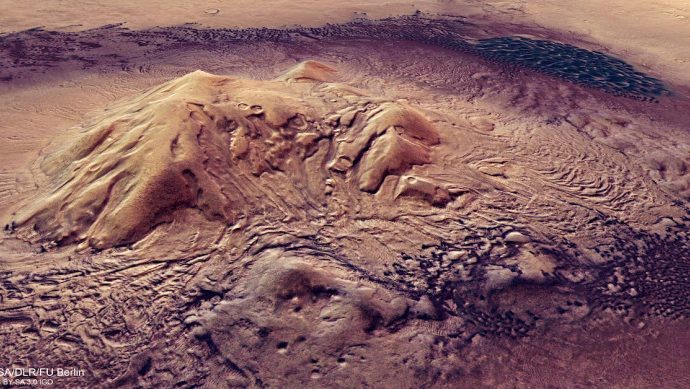The crater is located in the Terra Sabaea region of Mars.
Source: Interesting Engineering
It’s another great day for Space technology. The European Space Agency’s (ESA) Mars Express spacecraft recently captured stunning and detailed images of Mars’ Moreux Crater.
The Moreux Crater is located in an area that’s captivated researchers due to its geological makeup, as well as its striking geographical features.
Glacial activity on Mars
“Many of the features, such as dunes and flows, surrounding the central peak and southern region of Moreux crater appear to have been formed by ice,” the ESA wrote online.

“This is thought to have occurred in the form of substantial episodes of glacial activity over the past few million years. Many other features show signs of wind erosion or having been formed via wind-related processes — most notably, the dunes covering the crater floor. These dunes are largely sickle-shaped (barchanoid), and reveal much about wind direction within and across the crater.”

The images display a perspective view of the crater where you can clearly see the peak of the crater, which reaches nearly two kilometers (1.2 miles) in height. The depth of the crater goes down to three kilometers (1.9 miles) and spans 135 kilometers (83.8 miles) from end to end.
By using the High-Resolution Stereo Camera on the Mars Express, the camera was able to depict just how geologically fascinating the Moreux Crater is, and which materials make it up. The dunes around the crater, in pale yellow and orange, are predominantly made up of sandy materials. The darker shades of the crater show the areas that are rich in rock-forming minerals such as pyroxene and olivine, which contain magnesium and iron.

Further color differences come from sand and ash particles, which include basaltic and volcanic sand that has been pushed into the crater by strong Martian winds. The dunes that can be seen in the crater were also formed by the wind, clearly, sickle-shaped, they are a reflection of the wind’s direction as it blows across the crater’s floor.

Source: Interesting Engineering

































Leave a Comment
You must be logged in to post a comment.